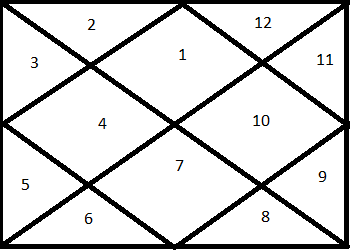Why remedies like ‘Pooja’ or ‘Shanti’ sometimes don’t work?
Many times, when we go to astrologers they suggest us conventional remedies. These remedies include Mantra, Vrata, Pooja, Shanti and so on. Sometimes these remedies work and sometimes they don’t. Similarly, some astrologers suggest gemstones and even gemstones don’t always work.
You may wonder, how come sometimes it works and sometimes it doesn’t. In today’s blog post we are understanding this.
Hindu philosophy describes 3 different types of challenges or Taapa. The challenges are ‘Aadhyatmik’ or personality related, ‘Aadhibhouthik’ or related to material things and ‘Aadhidhaivik’ or related to various energies or Devathas. Curious if you remember, when we were kids some people used to tell us sarcastically to study for exams rather than visiting temple and sometimes we did feel that it is correct because if preparations for exam are not complete then temple visit may not be helpful either. Incomplete preparations are an Aadhyatmik challenge. If we lack in any skills, first we shall build appropriate skills rather than doing Pooja or Shanti.
When we do Poojas or Shanti; sometimes we don’t know the skill we are lacking. This means we are unconsciously incompetent. Sometimes we even deflect our attention consciously or unconsciously to irrelevant causes of failure. Yoga, meditation or prayers are some of the traditional ways to work on ‘Aadhyatmik’ challenges. Focus on learning skills and following traditional family professions was also a traditional way to take care of this type of challenge. Skill building, soft skill development are modern ways to taking care of ‘Aadhyatmik’ challenges. Both traditional and modern ways of dealing with Aadhtyamik challenges is a great combination and give quick results.
The second type of challenge is Aadhibhoutik challenge. ‘Aadhibhoutik’ means challenge due to material things. Aadhibhoutik challenges include health related issues, accidents, fights, trouble due to breaking laws etc. A simplest approach for this is to take precautionary measures. Yogasana, Ayurveda, well planned routine, good diet, lot of physical activities and being in nature were some of the traditional ways of dealing with this type of challenges. In the modern world, this challenge has become even bigger because of machines and pace of life. Modern medicines, safety standards, health routines, medical checkups, weight loss programs, beauty therapies and robotics are some of the latest ways to take care of this challenge. For example, if the vehicle is not serviced as per schedule and the breaks fail then it is not a part of luck but lack of precaution. Such things come under Aadhibhouthik challenges.
Third type of challenge is Adhidhaivik challenge. Aadhidaivik means challenges caused by Dhevatha. Here we all shall note the difference between Dhev and Dhevatha. Dhev are pure forms and generally don’t cause any harm. These are Brahama, Vishnu and Mahesh. Dhevatha are energies that may boon or mar. Examples of Dhevatha are Kuldhevatha, SthanaDhevatha, VaasthuDhevatha, GramaDhevatha, NavagrahaDhevatha, Pithar, etc. Key role of Pooja or Shanthi is to take care of such challenges.
Generally, astrologers suggest remedies for AadhiDhaivik challenges and natives believe that once these remedies are performed everything will be fixed. Even sometimes the astrologer does not explain such basics. Ideally all 3 types of challenges shall be taken care for any type of success.
This is very well explained in BhagwadGeetha chapter 18 verse 14 given below.
Meaning: Foundation or purpose (First), executive(s)(Second) and various distinct means or tools(Third) along with various distinct actions(Fourth) and Dhaiva is also the fifth one here.
This verse is about the Karma and its results. What it says is Dhaivam is fifth aspect of the results. Because Horoscope is a representation of past karma this verse is also relevant to astrology. In this verse, foundation or purpose and executives or team are considered as Aadhyathmik. Similarly, various tools or means and actions are considered as Aadhibhouthik. Finally, Dhaiva is mentioned as fifth.
We all shall understand this very well either as an astrologer or a seeker. Astrologer can identify all 3 types of challenges from the horoscope. A client shall understand that just one type of remedy is not good enough. This is also responsibility of an astrologer to make the native understand it. Unless all types of challenges are not resolved, a project may not be successful, or an expected output may not be achieved.
I generally explain this to every client of mine to make sure they take efforts and cover all the aspects. This gives confidence to the native, ensures success and reduces dependency of a native on an astrologer. Finally, our goal shall be to achieve success, enjoy the journey and prosper with self-respect and understanding this helps to be on the right path.







Comments
Post a Comment